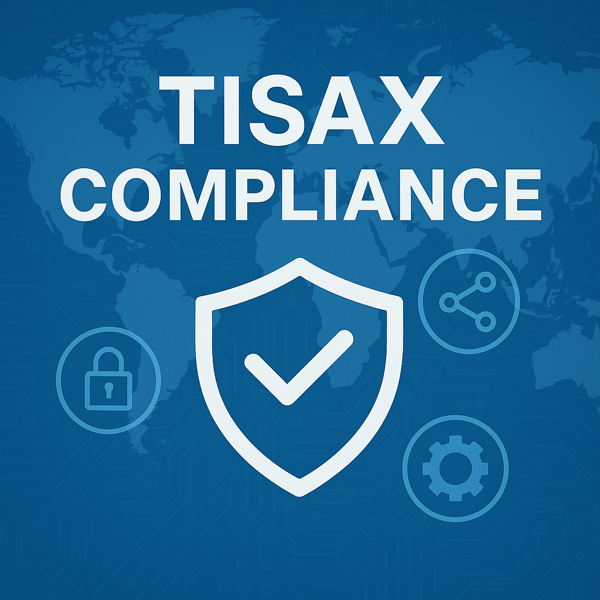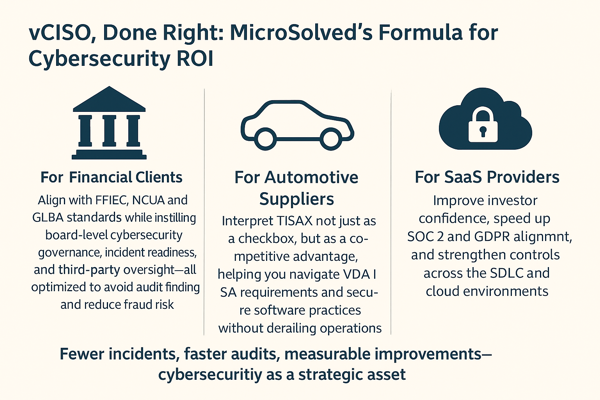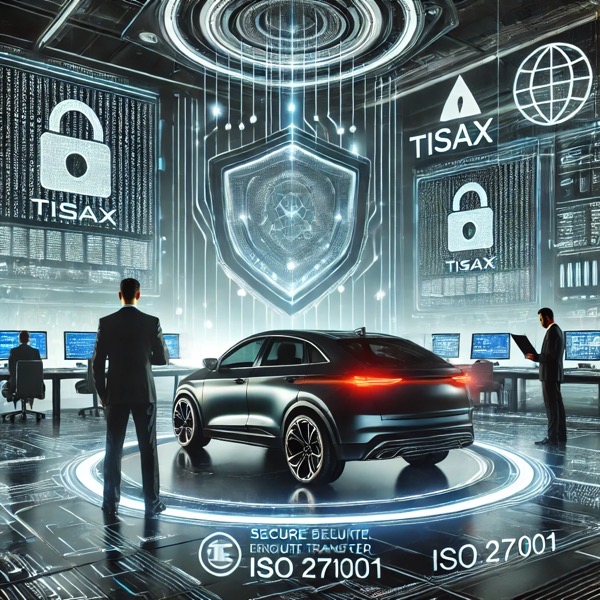The journey to achieving TISAX compliance can feel like navigating a complex labyrinth, fraught with unexpected twists and turns. TISAX, or Trusted Information Security Assessment Exchange, is a key certification for automotive companies, reflecting comprehensive security standards. As businesses grapple with these rigorous requirements, understanding the most challenging hurdles is critical for successful compliance.

For many organizations, defining and implementing comprehensive security controls stands as a primary challenge, demanding a deep comprehension of TISAX standards and the ability to address varied regional cybersecurity threats. Compounding the complexity are the diverse maturity levels and stringent assessment criteria, necessitating meticulous preparation and strategic avoidance of audit pitfalls.
Moreover, the relentless cycle of audits and regulatory overlaps can lead to audit fatigue, all while financial and logistical pressures mount from the hefty costs of certification. By delving into the most formidable aspects of TISAX compliance, this article aims to illuminate how organizations can effectively navigate and conquer these intricate challenges.
The 3 Most Difficult Issues in TISAX Compliance
Navigating TISAX compliance involves multiple challenges for automotive companies. Here are the top three difficulties:
- Stringent Documentation Requirements
Meeting TISAX standards requires detailed documentation of security measures. Auditors expect clear evidence of these measures being implemented and followed. This can be overwhelming as every part of the automotive supply chain must comply.
- Scope Alignment with ISMS
The TISAX assessment scope must align with the Information Security Management System (ISMS). This can be complex, especially for companies accustomed to ISO/IEC 27001. Integrating these systems requires meticulous planning, which small or specialized firms may find particularly challenging.
- Achieving Maturity Level 3
To receive a TISAX label, a maturity level of at least 3, with no non-conformities, is necessary. This means businesses must have flawless processes and controls. Implementing new systems and managing these requirements can lead to hidden costs, covering everything from staff training to process changes.
Despite the difficulties, investing in experienced TISAX consultants may expedite the process, though it adds to the cost.
Introduction: Navigating the TISAX Labyrinth
Navigating the complexities of TISAX compliance can be daunting for automotive companies. Despite not being legally required, TISAX certification is crucial. Major Original Equipment Manufacturers (OEMs) often demand it from suppliers to ensure business continuity.
Successfully maneuvering through the Trusted Information Security Assessment Exchange begins with understanding assessment levels. Companies must define their maturity and assessment levels to set clear audit objectives. This process can present challenges in documenting security measures. Auditors insist on clear evidence that security controls are not only implemented but also maintained.
Costs are another significant hurdle. Company size and chosen assessment level affect expenses. External consulting support for security improvements can add to the financial burden. However, without these investments, passing the TISAX audit remains a distant goal.
Here’s a snapshot of the hurdles on this journey:
|
Challenge
|
Description
|
|
Documenting Controls
|
Clear evidence of security measures needed.
|
|
Financial Costs
|
Significant based on company size and scope.
|
|
Meeting OEM Demands
|
Certification vital for securing contracts.
|
Ultimately, achieving TISAX compliance means overcoming these hurdles. But with precise planning, companies can secure their place in the vast automotive supply chains.
Defining Comprehensive Security Controls
Establishing comprehensive security controls is vital for TISAX compliance in the automotive industry. These controls protect sensitive data like vehicle prototypes and production plans from cyber threats and industrial espionage. The TISAX framework enforces specific measures and focuses on risk assessment and mitigation. It is essential for companies to showcase secure practices in software development and maintain a secure IT infrastructure. Planning for incident response and disaster recovery is also necessary. This preparation helps ensure business continuity in case of security breaches. Furthermore, TISAX mandates frequent security assessments and monitoring to guarantee compliance with evolving cybersecurity threats.
Understanding TISAX Standards and Requirements
TISAX, or Trusted Information Security Assessment Exchange, sets the standard for evaluating information security within the automotive industry. It is based on a questionnaire from the Verband der Automobilindustrie (VDA) and aligns closely with ISO/IEC 27001 standards. Organizations strive for TISAX compliance to ensure the secure handling of business partner information and prototype protection. It also requires adherence to GDPR data protection standards. Companies can choose to perform self-assessments or more rigorous third-party audits, depending on their needs. The ENX Association manages the certification process. It sets the levels and scope of assessments, which enhances trust in the global automotive supply chain.
Addressing Regional Cybersecurity Threats
Though specific regional threats were not detailed, it’s crucial to understand the general landscape. Countries may have different cybersecurity challenges that affect the automotive supply chain. By tailoring security measures to regional needs, companies can better protect sensitive data. Staying aware of local regulations and risks allows companies to refine their security posture, ensuring strong defense mechanisms are in place to fend off diverse cyber threats. This regional awareness enhances proactive measures, ultimately supporting successful assessments and secure operations in the global marketplace.
Varied Maturity Levels and Assessment Criteria
TISAX, or the Trusted Information Security Assessment Exchange, helps automotive companies bolster their security posture. It uses maturity levels to help companies manage information security systems. These levels ensure that security measures meet the demands of automotive supply chains and protect vast amounts of sensitive data. Maturity Level 0 is incomplete, where objectives aren’t required. Maturity Level 1, or Perform, requires basic documentation. Maturity Level 2, or Manage, focuses on ready systems supported by procedures. The TISAX assessment criteria also involve different scrutiny levels. For instance, AL 1 allows self-assessment, but it will not lead to a TISAX label. AL 3 is more rigorous with onsite audits, ensuring detailed evaluations.
Preparing for TISAX Framework Specifics
Preparing for the TISAX framework is crucial for success. It requires a systematic approach. This comes from the German Association of the Automotive Industry (VDA), managed by the ENX Association. Automotive companies need to develop an Information Security Management System (ISMS). The VDA ISA catalog is a guide for aligning with TISAX. This catalog lists security controls tailored for automakers. TISAX standardizes these security measures. Before TISAX, security requirements varied widely across the industry. Now, it reduces inefficiencies by creating consistent guidelines.
Avoiding Pitfalls in Audit Preparation
Readying for a TISAX audit can be daunting. Many firms overlook the time and people needed for thorough preparation. Small businesses with limited staff might find this particularly hard. Technical challenges, such as network segmentation, might surprise some. Another challenge is fostering a security-minded culture company-wide. Every department needs to be onboard. Proper management of third-party suppliers is also vital. Suppliers must meet TISAX requirements, which can add complexity. To avoid pitfalls, companies should plan carefully. Resources should be allocated wisely. Existing tools can help with managing information security documentation. This ensures smoother preparation and a successful assessment.
Managing Audit Fatigue
Audit fatigue is a significant challenge for those seeking TISAX compliance. The process of constantly documenting and providing evidence for security measures can be exhausting. Companies must implement new security controls and technologies regularly, which adds to this fatigue. Balancing the need for continuous remediation of identified security gaps with routine audit preparations can be particularly tiring. Additionally, audit providers often request frequent reassessments to confirm compliance, further contributing to fatigue. Moreover, integrating staff training and awareness programs as part of compliance efforts demands ongoing attention. This combination of factors can make the process of achieving and maintaining TISAX compliance a daunting task for many organizations.
Dealing with Overlapping Regulatory Standards
The automotive industry faces a web of varied security requirements. TISAX helps address this by offering a unified framework for information security standards. This framework reduces the number of repetitive audits suppliers would otherwise endure. By establishing a common standard, TISAX mitigates audit fatigue and streamlines the security assessment process. This allows companies to meet critical information security requirements without juggling conflicting regulations. TISAX’s development was driven by the need to manage security uniformly across complex global supply chains. By adhering to international security guidelines, companies in the automotive sector can maintain compliance with regulatory standards and industry-specific measures.
Balancing Multiple Compliance Audits
Compliance with TISAX helps companies share audit results with many business partners. This shared assessment system reduces the need for repeated audits. TISAX offers different assessment levels, like AL 2 and AL 3, letting organizations decide on the depth of their audits. These levels allow companies to choose the right complexity for their compliance needs. While ISO 27001 needs independent certification audits, TISAX provides both self-assessments and on-site audits. For companies in the automotive supply chain, TISAX audits ensure a consistent and high level of security across partners, suppliers, and service providers. Without TISAX certification, a company might struggle to work with key industry players, making these audits crucial for participation in the automotive industry.
Dealing with Overlapping Regulatory Standards
The automotive industry faces the challenge of overlapping regulatory standards. These can cause confusion and effort duplication among manufacturers and suppliers. TISAX, or the Trusted Information Security Assessment Exchange, offers a solution. It creates a unified framework for information security, reducing audit burdens.
Challenges of Overlapping Standards:
- Multiple Audits: Companies often undergo several audits, which can be resource-intensive.
- Conflicting Rules: Different regions and partners may have varying security requirements.
- Complex Supply Chains: Global supply chains add layers of complexity.
TISAX Benefits:
- Streamlined Process: A single standard minimizes conflicting regulations and simplifies compliance.
- Reduced Audit Fatigue: Suppliers face fewer repetitive audits, freeing up resources.
- Consistent Compliance: Facilitates adherence to both international guidelines and industry-specific measures.
A standard like TISAX is necessary for uniform security management across the automotive supply chain. It helps companies maintain a robust security posture while saving time and resources. By offering consistent standards, TISAX ensures information security is strong and consistent throughout the automotive industry.
Balancing Multiple Compliance Audits
Balancing multiple compliance audits can be challenging for automotive companies. TISAX compliance offers a streamlined solution by allowing companies to share audit results with multiple business partners. This shared assessment system reduces repetitive audits, saving time and resources.
Below are some key points to consider:
- Assessment Levels: TISAX features different assessment levels, like AL 2 and AL 3. These levels help determine the depth and complexity required for compliance audits.
- Types of Audits: TISAX provides flexible audit options. Companies can choose from self-assessments, on-site audits, and more based on their specific compliance needs.
- Industry Collaboration: For companies in the automotive supply chain, TISAX certification is crucial. It ensures a high level of security across partners and suppliers, enabling collaboration with key industry players.
Here’s a quick comparison to illustrate:
|
ISO 27001
|
TISAX
|
|
Independent certification audits
|
Shared assessment results
|
|
Fixed audit structure
|
Varying assessment levels
|
Being TISAX certified is essential for integrating with the automotive industry’s supply chains and maintaining a strong security posture. This ensures business continuity and compliance with security standards.
Financial and Logistical Challenges
Achieving TISAX compliance poses both financial and logistical hurdles. Companies new to these requirements may find creating an efficient Information Security Management System (ISMS) costly. Expenses can range from €20,000 to €50,000, especially if a company lacks a pre-existing system. Understanding and implementing TISAX’s complex criteria might call for consultant services, adding to financial burdens. Beyond costs, the process requires significant logistical preparation. Companies must conduct a gap analysis, train employees, document thoroughly, and select an auditor. A well-structured approach can ease this process. Breaking down complex requirements into smaller tasks and using ISMS tools effectively helps manage compliance data efficiently.
Costs of TISAX Certification
The financial demands of TISAX certification can vary widely. The overall expenses depend on factors like an organization’s security maturity and chosen assessment level. Typically, audit provider fees range between $5,500 and $16,500 USD. Additionally, registration fees may be about $500 USD. If a company opts for a physical audit at assessment level AL 3, costs may rise by 15-20% compared to AL 2. Preparing an ISMS, tech upgrades, and external consultations can add between $22,000 to $55,000 USD. Consulting fees can cost €100 to €300 per hour, with an annual label fee from $1,100 to $3,300 USD. Such expenses can stretch budgets, especially if companies need ongoing external help.
Leveraging Strategic Investments and Partnerships
For TISAX success, strategic investments and partnerships are crucial. Collaborating with seasoned auditors early on ensures a well-calibrated compliance effort and valuable feedback. Organizations should focus on key areas like policy development and security controls first, before branching out. Investing smartly in continuous compliance programs ensures that ISMS evolves with business changes. This approach upholds security standards and aligns with industry goals. Achieving TISAX compliance is also vital for fostering trust and safeguarding sensitive data. Though non-compliance isn’t fined, it risks business and reputation in the automotive sector. Therefore, prioritizing these investments can enhance competitiveness and partnership quality within the industry.
Conclusion: Overcoming TISAX Compliance Hurdles
Navigating TISAX compliance can be challenging for the automotive industry, especially when dealing with the Trusted Information Security Assessment Exchange criteria. The key lies in breaking down these requirements into manageable steps. Hiring consultants with TISAX expertise is often beneficial, as they help guide companies through this complex process.
Implementing a robust Information Security Management System (ISMS) is another major hurdle. For companies starting from scratch, investing in comprehensive ISMS tools and planning realistically is crucial. This helps ensure the system supports TISAX standards efficiently.
The certification process itself is time-consuming and resource-intensive. Advanced planning with realistic timelines and dedicated resources is necessary to prevent team burnout. Working with an experienced TISAX auditor early on can provide valuable feedback and streamline the compliance journey.
Continuous compliance requires regularly updating the ISMS to keep up with industry and regulatory changes. This ensures alignment with business goals and secures long-term business continuity. By adopting these strategies, companies can overcome TISAX compliance challenges effectively and maintain a strong security posture in the automotive supply chain.
Key Strategies:
- Break down TISAX criteria.
- Invest in ISMS tools.
- Plan realistically for certification.
- Work with experienced auditors.
- Regularly update ISMS.
Getting Insights and Help from MicroSolved, Inc.
MicroSolved, Inc. is a trusted partner in enhancing security measures, especially for industries like automotive manufacturing and supply chains. They offer expert guidance on complex security challenges.
Benefits of Consulting with MicroSolved:
- Expert Advice: Leverage their extensive knowledge in security standards and legal requirements.
- Customized Solutions: Tailor security measures to fit your company size and specific needs.
- Proactive Strategies: Develop strategies to protect intellectual property and prototype protection.
Key Services Offered:
- Risk Assessment: Identify potential risks in the automotive supply chain.
- Security Management: Implement robust security management frameworks.
- Business Continuity: Ensure operations run smoothly even during disruptions.
Their approach involves thorough internal audits and a successful assessment strategy, which includes both remote and in-person evaluations. This helps partners maintain a strong security posture.
MicroSolved’s insights are vital in meeting the high assessment levels needed in the Trusted Information Security Assessment Exchange (TISAX), providing confidence to business partners and original equipment manufacturers.
For any automotive company, understanding and complying with TISAX is crucial. MicroSolved, Inc. provides the insights necessary for achieving compliance and securing your place in the automotive industry.
* AI tools were used as a research assistant for this content.


 Unlike one-size-fits-all models, our vCISO engagements begin with immersive understanding: of your business model, sector-specific compliance demands (think NCUA/FFIEC for credit unions, TISAX for auto suppliers, GDPR/SOC2 for SaaS), and your organizational risk appetite. From there, we build a living security program that’s actionable, measurable, and defensible under scrutiny.
Unlike one-size-fits-all models, our vCISO engagements begin with immersive understanding: of your business model, sector-specific compliance demands (think NCUA/FFIEC for credit unions, TISAX for auto suppliers, GDPR/SOC2 for SaaS), and your organizational risk appetite. From there, we build a living security program that’s actionable, measurable, and defensible under scrutiny.
